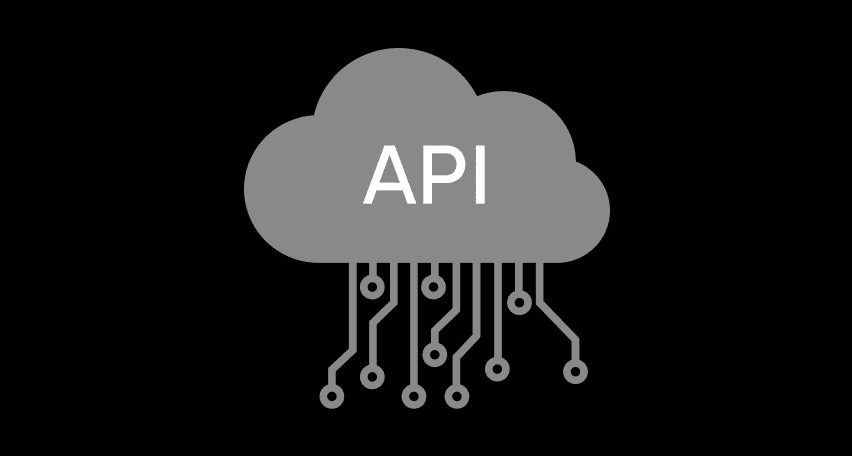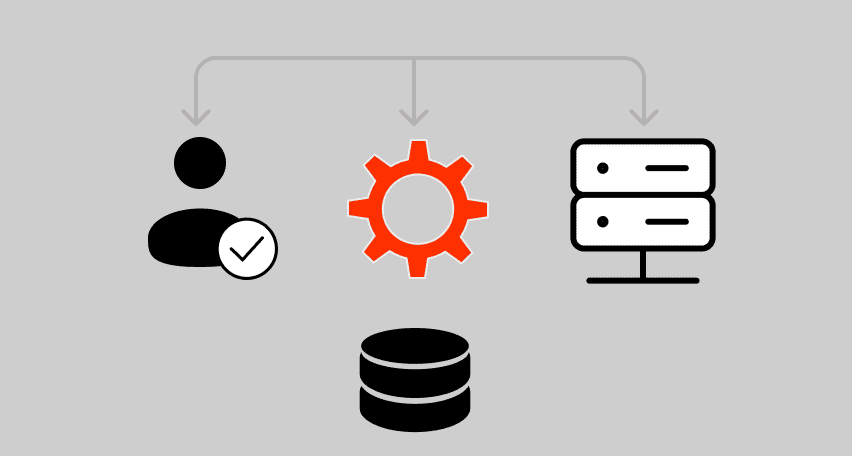In a world where the global economy is connected, banking plays a foundational role in connecting companies financially regardless of their location. However, due to the critical nature of finances and the risk of fraud, security, and privacy, banking applications enabling these transactions are extremely complex, perhaps more complicated than most enterprise software.
Even a single account in the banking application holds several records are at a time. Since reliability and scalability are a major requirement, banking applications need to go through extensive performance testing. In this article, we will highlight key stages and techniques banking application testing and discuss why performance testing for banking applications is critical.
Why Performance Testing is Needed for Every Finance Business?
With the rapid rise of digital transformation, the finance industry faces increasing pressure to reinvent its operations. Technology is now the primary driver of change, influencing everything from online banking and bill payments to cash transfers and withdrawals. As financial services become more software-driven, ensuring application performance is crucial to maintaining security, reliability, and customer satisfaction.
Banking applications must handle high transaction volumes while providing a seamless user experience. However, legacy banking systems often struggle with performance limitations, making them less responsive and reliable for fast transaction processing. This is particularly evident in retail banking environments where transaction processing systems manage everything from customer accounts to payment routing.
Implementing load testing for banking helps financial institutions validate system scalability, optimize response times, and prevent failures under peak demand. For instance, comprehensive performance testing of the transaction processing system can reveal critical bottlenecks in back-office automation and front-end transaction management that might otherwise go undetected until peak usage periods.
Also, most advanced performance testing tools are not aligned with the architecture of legacy banking business applications and their transactions. Sometimes, these applications fail to process a business process the first time.
This means that these applications may miss recording important business transactions. Even if a single process is missed during scenario recording, the software may fail to reflect the true business load on the server, resulting in useless testing. In legacy applications, it’s essential to cover each and every business process while recording.
Aside from that, since performance test consultants must record processes multiple times and verify the recorded script, it can be really hard to replicate in legacy applications. Even when they do that, they must perform this task repeatedly until all the records have been processed.
If the banking application executes all the processes successfully, the commit action validates all the transactions at the end. If that doesn’t happen, the Roll Back feature postpones all related processes and returns the failed status. Both these issues are critical to banking applications and must be handled carefully.
This is why using the best load testing tools is critical for effective load testing for banking applications. For example, when you compare K6 and JMeter, you’ll find that each offers distinct advantages for testing banking systems, which have unique requirements. Performance testing allows testers to evaluate the true load capacity of banking applications and ensure that the application keeps working optimally even in peak hours.
For comprehensive insights into core banking systems and how to enhance their operational efficiency, you might want to explore core banking performance testing solutions that can provide targeted support for these complex systems.
Digital banking involves a range of services, such as bill payments, marketing, financial management, analytics, and more. These emerging applications in finance force software developers to incorporate other emerging technologies and come up with new features to meet ever-changing customer demands.
Amid social distancing measures, we can expect virtual banking to become the next best thing. It has the power to transform the banking sector and considerably improve the customer experience. Nevertheless, it is essential to ensure performance while implementing these features.
Performance testing helps software teams test the efficiency of any given application. It involves a wide variety of tests that assist testing teams in gauging the performance of different technologies. Performance testing not only helps teams measure the speed and scalability of the application but also its consistency and resilience.
However, many banking applications still rely on technology that is obsolete in other industries. Therefore, the majority of the current testing tools lack the functionalities to implement performance testing in these legacy applications.
This is why many testers rely on performance testing to detect significant performance issues such as buffer overflow, memory leaks, and memory mismanagement. At the same time, the testing procedure can expose major issues in an application, such as bandwidth limitation and load balancing problems.
When It Is Needed to Start Thinking About Performance Testing
For evaluating the performance of current systems, software teams must determine when to start performance testing in the development process to get the maximum benefits. Many testing teams are not sure about when they should start thinking about performance testing; in the beginning, alongside development, or in the last phase.
First, we must understand what performance means regarding testing for banking applications. Banking applications must process billions of thousands of transactions every day without making any errors.
An iota of miscalculation can have grave consequences for the bank. This is why performance goes beyond speed in banking applications. The system should be performing reliably without stressing the servers too much.
Likewise, only paying attention to response times, means that we only see symptoms of performance instead of the actual vulnerabilities causing those problems. Performance testing needs to focus on those bottlenecks so we can improve the overall performance instead of chasing after symptoms.
This is why it’s best to begin testing at an earlier stage. Doing so helps software teams identify major issues in the beginning and continue the testing process along with the entire evolution of the application.
Types of Performance Testing for Banking App
Load Testing
As we discussed above, it evaluates a system’s ability to perform under real-world user loads. The primary objective of this text is to identify performance bottlenecks in the application before deployment.
Endurance Testing
Since it is a subset of load testing, it is also considered a part of performance testing. Here we measure the application’s performance against anticipated user loads over a long time. The performance is measured against benchmarks set during initial performance testing.
Volume Testing
In volume testing, a large amount of data is injected in a database suddenly, and testers evaluate its effect on the overall behavior of the software system. Therefore, testers are able to check how the system behaves under changing database volumes.
Stress Testing
Stress testing is used to measure an application’s performance against extreme workloads, such as high data processing or traffic. The primary objective of this test is to identify the breaking point of the application.
Capacity Testing
Capacity testing helps software testers identify how many users a software system can handle before the performance of the application goes below expectations.
Scalability Testing
Software testers use scalability testing to determine an application’s ability to scale up depending on the increase in user load. It helps us identify the system’s ability to adapt to increasing user loads.
Spike Testing
Spike testing refers to the process where testers evaluate how a system responds to large spikes in user load.
How to Start Performance Testing For Banking Applications
QA Banking App Testing needs to have a clear testing strategy so you can expand it to all other projects. Without a clear outline or framework, it’s difficult to schedule a timeline accurately, allocate roles and responsibilities amongst the testing team, or estimate the entire budget.
This is why having step-by-step knowledge of your bank application testing process is crucial. Depending on the scale of the banking app, business objectives, and features, you may need to add or remove steps from the framework. That said, the banking app testing process usually follows the same procedure as any agile application.
Each component of the software development lifecycle is designed to maximize speed and efficiency. This is why you need to break down testing into the usual software testing lifecycle. Doing so ensures that every component of the banking app is verified in terms of quality.
Requirement Gathering and Analysis
Requirement Analysis is the step where the performance testing for the banking app begins. Here the testing team tries to evaluate the requirements of testing and outline which of the given requirements they can test.
The specifications of any given system can be either functional or non-functional. This means that the testers must check functional business features as well as metrics such as speed, reliability, availability, and security.
Test Case Development
The Test Case Development phase results in the creation of test cases and their corresponding scripts. The test team needs to create, verify, and remake specific test cases based on given features and their requirements. Furthermore, they also need to come up with testing data they can use on their test cases and scripts.
Remember that the QA specialist must create an online banking application test suite where each case is separated by functionality modules. Doing so helps testers cover all major aspects of the banking app, i.e., user experience, functionality, load balancing, and security.
Environment Setup
The test environment comprises of testing conditions such as hardware and software specifications used during the testing procedure. Ideally, it should imitate the environment used by the end-user in his/her working space. The testing team is required to set the testing environment completely and check the readiness of the testing environment (smoke testing).
This means that the testing team needs to have the knowledge of the architecture, software, and hardware specifications of the environment.
Execution
In the Test Execution phase, testers carry out testing according to the test plans and test cases created by the team. They will evaluate if all the requirements in the RTM match and report any errors they find in the testing procedure. They will then report the testing errors to the developers working on the project.
Furthermore, the team needs to document all test results and log any case that has failed. Afterward, they need to map the bugs with the test cases in the RM and keep track of these bugs until closure.
Analyze Results, Report, and Retest
In the end, the entire testing team will meet, exchange information, and analyze testing documents to optimize the testing strategies. These teams have to analyze the data individually, as well as a cross-functional team.
Based on their findings, they have to reprioritize the remaining tests and re-execute them as required. After all metric values fall within acceptable limits, no thresholds are violated, and the team has gathered all of the desired findings, the testing procedure of that scenario is completed.
Practice Projects at PFLB
Performance testing is crucial for ensuring the maximum performance of banking applications. Thorough testing is critical for banking applications since they deal with large volumes of sensitive data. An error-prone banking web application testing procedure puts customers at risk and endangers their financial assets.
PFLB has considerable experience testing banking applications. Our professional expertise allows us to identify underlying bottlenecks inside banking applications and ensures that they perform reliably and efficiently.
Related insights in blog articles
11 API Failure Causes and How To Solve Them

When an API fails, the consequences ripple quickly through the entire system. Transactions stall, integrations break, and frustrated users flood your support channels. Understanding exactly why API failures happen — and how to fix them — is essential for developers and businesses alike. This article examines the most common reasons behind API failures, explores the […]
API Mocking: A Complete Guide

Waiting for APIs to become available or stable can slow down entire projects. API mocking provides a smart way to avoid these roadblocks by simulating real API responses, keeping your teams productive and ensuring smoother integration down the line. In this guide, you’ll discover exactly what API mocking involves, how it differs from using real […]
API Endpoint: A Complete Guide

Modern applications rely heavily on APIs (Application Programming Interfaces) to communicate and exchange data across different systems. At the heart of this interaction lies the API endpoint — a fundamental concept that defines where and how data exchanges happen. This guide explains clearly what an API endpoint is, outlines its importance, and provides practical insights […]
gRPC vs. REST: Detailed Comparison

Choosing between gRPC and REST can feel confusing, especially if you’re trying to figure out the best way for your applications to communicate. This article breaks down the grpc vs rest comparison clearly, without jargon or confusion. You’ll learn exactly what each protocol is, the advantages and disadvantages of each, and understand why gRPC is […]
Be the first one to know
We’ll send you a monthly e-mail with all the useful insights that we will have found and analyzed
People love to read
Explore the most popular articles we’ve written so far
- Top 10 Online Load Testing Tools for 2025 May 19, 2025
- Cloud-based Testing: Key Benefits, Features & Types Dec 5, 2024
- Benefits of Performance Testing for Businesses Sep 4, 2024
- Android vs iOS App Performance Testing: What’s the Difference? Dec 9, 2022
- How to Save Money on Performance Testing? Dec 5, 2022
